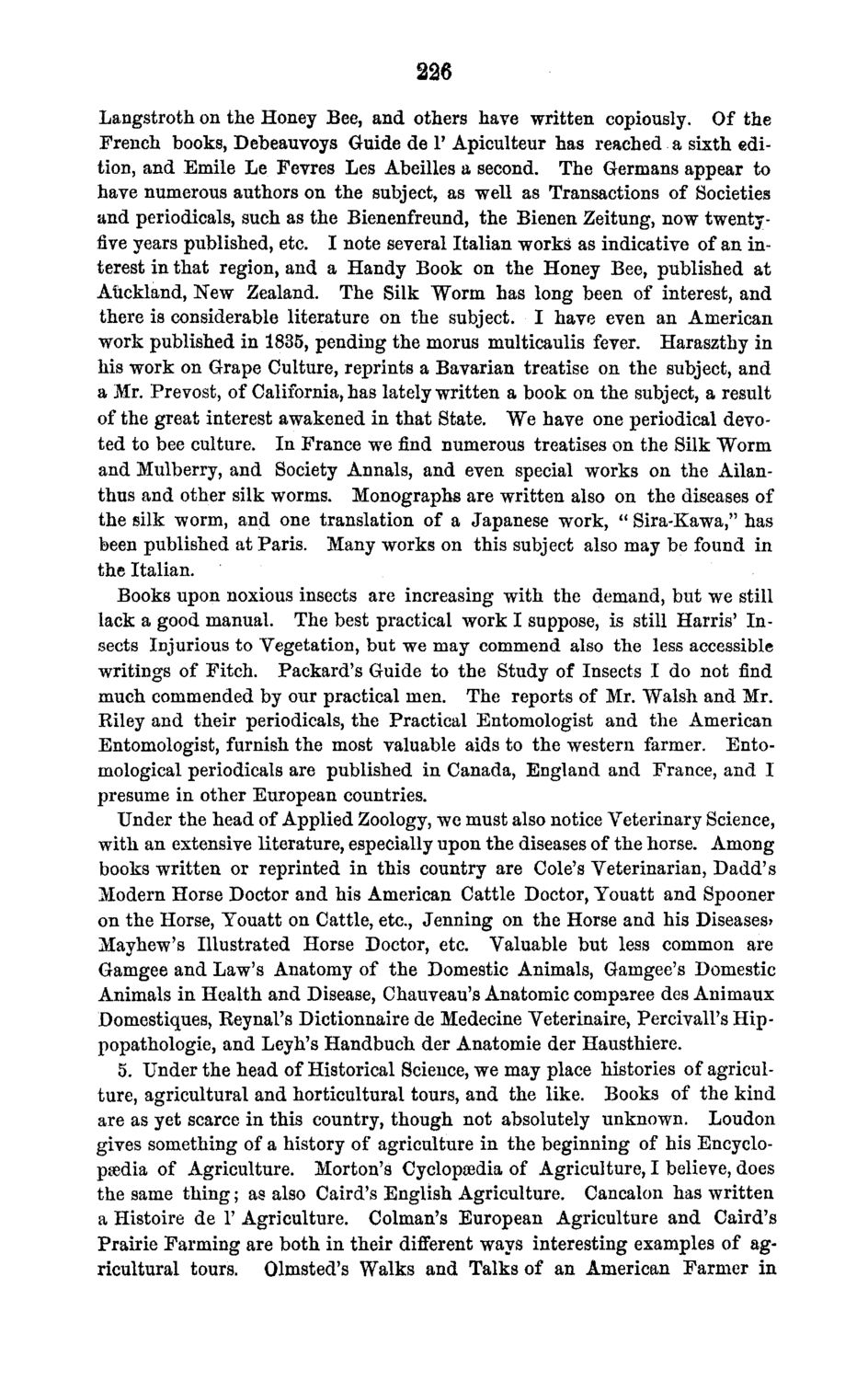| |
| |
Caption: Board of Trustees Minutes - 1870
This is a reduced-resolution page image for fast online browsing.

EXTRACTED TEXT FROM PAGE:
226 Langstroth on the Honey Bee, and others have written copiously. Of the French books, Debeauvoys Guide de Y Apiculteur has reached a sixth edition, and Emile Le Fevres Les Abeilles a second. The Germans appear to have numerous authors on the subject, as well as Transactions of Societies and periodicals, such as the Bienenfreund, the Bienen Zeitung, now twentyfive years published, etc. I note several Italian works as indicative of an interest in that region, and a Handy Book on the Honey Bee, published at Auckland, New Zealand. The Silk Worm has long been of interest, and there is considerable literature on the subject. I have even an American work published in 1835, pending the morus multicaulis fever. Haraszthy in his work on Grape Culture, reprints a Bavarian treatise on the subject, and a Mr. Prevost, of California, has lately written a book on the subject, a result of the great interest awakened in that State. "We have one periodical devoted to bee culture. In France we find numerous treatises on the Silk Worm and Mulberry, and Society Annals, and even special works on the Ailanthus and other silk worms. Monographs are written also on the diseases of the silk worm, and one translation of a Japanese work, " Sira-Kawa," has been published at Paris. Many works on this subject also may be found in the Italian. Books upon noxious insects are increasing with the demand, but we still lack a good manual. The best practical work I suppose, is still Harris' Insects Injurious to Vegetation, but we may commend also the less accessible writings of Fitch. Packard's Guide to the Study of Insects I do not find much commended by our practical men. The reports of Mr. Walsh and Mr. Kiley and their periodicals, the Practical Entomologist and the American Entomologist, furnish the most valuable aids to the western farmer. Entomological periodicals are published in Canada, England and France, and I presume in other European countries. Under the head of Applied Zoology, we must also notice Veterinary Science, with an extensive literature, especially upon the diseases of the horse. Among books written or reprinted in this country are Cole's Veterinarian, Dadd's Modern Horse Doctor and his American Cattle Doctor, Youatt and Spooner on the Horse, Youatt on Cattle, etc., Jenning on the Horse and his Diseases* Mayhew's Illustrated Horse Doctor, etc. Valuable but less common are Gamgee and Law's Anatomy of the Domestic Animals, Gamgee's Domestic Animals in Health and Disease, Chauveau's Anatomic comparee des Animaux Domestiques, Keynal's Dictionnaire de Medecine Veterinaire, Percivall's Hippopathologie, and Leyh's Handbuch der Anatomie der Hausthiere. 5. Under the head of Historical Science, we may place histories of agriculture, agricultural and horticultural tours, and the like. Books of the kind are as yet scarce in this country, though not absolutely unknown. Loudon gives something of a history of agriculture in the beginning of his Encyclopaedia of Agriculture. Morton's Cyclopaedia of Agriculture, I believe, does the same thing; as also Caird's English Agriculture. Cancalon has written a Histoire de 1' Agriculture. Colman's European Agriculture and Caird's Prairie Farming are both in their different ways interesting examples of agricultural tours. Olmsted's Walks and Talks of an American Farmer in
| |